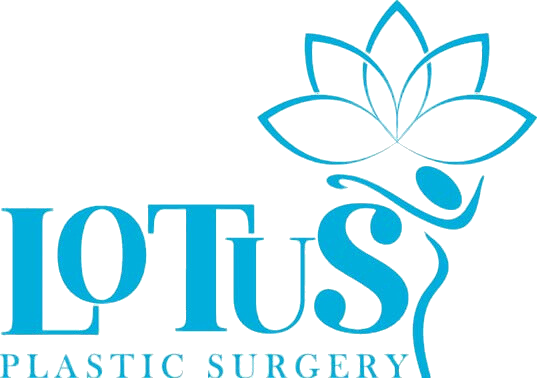Abdominoplasty
Tummy Tucks
Your tummy can be a difficult spot to achieve the look you are wanting.
Pregnancy may have altered your abdominal muscles or your weight might have fluctuated over time causing your stomach muscles to change.
Some people spend a lot of time in the gym, while this is an excellent way to improve your muscles and generally fitness, sometimes it’s not going to lead to the desired goal you have for your body.
The correct term for a tummy tuck, is abdominoplasty.
Abdominoplasty a surgical procedure that sculpts and tones the midsection for a slimmer body contour.
Surgery for your tummy is planned carefully to reduce additional fat and remove unwanted skin to flatten the abdomen.
A tummy tuck can also help to reduce or remove stretch marks from the lower part of the abdominal area.
Post Partum (after your baby) a tummy tuck can be performed to repair any damage obtained during your pregnancy.
Is Abdominoplasty right for you?
Abdominoplasty, commonly known as a tummy tuck, is a surgical procedure that aims to remove excess skin and fat from the abdominal area, resulting in a flatter and firmer belly. This procedure is often sought after by individuals who have undergone significant weight loss, pregnancy, or aging that has resulted in loose and sagging skin in the abdominal area.
As a plastic surgeon, it is important to educate your patients on the various aspects of abdominoplasty. Here are some key points to keep in mind when discussing this procedure with your patients.
1. Who is a good candidate for abdominoplasty?
Ideal candidates for this procedure are individuals who are in good overall health, have a stable weight, and have realistic expectations for the outcome of the surgery. Patients who have excess skin and fat in the abdominal area and have tried to address it with diet and exercise without success can benefit from abdominoplasty.
2. What are the different types of abdominoplasty?
There are several types of abdominoplasty, including full abdominoplasty, mini abdominoplasty, and extended abdominoplasty. A full abdominoplasty involves removing excess skin and fat from the entire abdominal area, while a mini abdominoplasty is a less invasive procedure that focuses on the lower abdomen. Extended abdominoplasty is a more extensive procedure that involves removing skin and fat from the entire abdomen and the flanks.
3. What is the recovery process like?
After the procedure, patients can expect to experience some swelling and discomfort in the abdominal area. It is important to follow post-operative instructions carefully to ensure proper healing and minimize the risk of complications. Patients should avoid strenuous activities for several weeks and wear compression garments to support the healing process.
4. What are the risks associated with this procedure?
Like any surgical procedure, there are risks associated with abdominoplasty, including bleeding, infection, and scarring. It is important to discuss these risks with your patients and provide them with realistic expectations for the outcome of the surgery.
Overall, abdominoplasty can be a life-changing procedure for patients who are struggling with excess skin and fat in the abdominal area. As a plastic surgeon, it is important to provide your patients with the information they need to make an informed decision about this procedure and to ensure that they have a safe and successful outcome.
Detailed complications of abdominoplasty
Abdominoplasty, also known as a tummy tuck, is a popular plastic surgery procedure that helps to improve the appearance of the abdominal area by removing excess skin and fat. While abdominoplasty can produce excellent results, it is important for plastic surgeons and patients alike to be aware of the potential complications associated with this procedure. In this blog, we will discuss the evidence-based percentages of the main complications associated with abdominoplasty.
Infection: Infection is a common complication of any surgical procedure, including abdominoplasty. It can occur in up to 2.5% of cases. This risk can be reduced by practicing good hygiene, using appropriate antibiotics, and ensuring that all instruments are properly sterilized.
Hematoma: A hematoma is a collection of blood that can occur under the skin after surgery. In abdominoplasty, hematomas are most commonly associated with the use of drains. The incidence of hematomas after abdominoplasty ranges from 1% to 5%.
Seroma: A seroma is a collection of fluid that can form under the skin after surgery. This complication is more common in surgeries that involve extensive dissection or removal of tissue. The incidence of seromas after abdominoplasty ranges from 3% to 15%.
Wound Dehiscence: Wound dehiscence occurs when the surgical incision opens up after surgery. This complication is more common in surgeries that involve extensive tissue manipulation. The incidence of wound dehiscence after abdominoplasty ranges from 1% to 3%.
Nerve Damage: Nerve damage can occur during surgery, resulting in numbness, tingling, or weakness in the affected area. This complication is more common in surgeries that involve extensive tissue manipulation. The incidence of nerve damage after abdominoplasty ranges from 1% to 2%.
Skin Necrosis: Skin necrosis is the death of tissue, which can occur after surgery due to a lack of blood supply. This complication is more common in surgeries that involve extensive tissue removal or manipulation. The incidence of skin necrosis after abdominoplasty ranges from 1% to 3%.
Thromboembolism: Thromboembolism is a serious complication that can occur after any surgery. It involves the formation of blood clots in the legs that can travel to the lungs and cause a pulmonary embolism. The incidence of thromboembolism after abdominoplasty ranges from 0.2% to 2%.
In conclusion, abdominoplasty is a popular plastic surgery procedure that can produce excellent results. However, like any surgical procedure, it is important to be aware of the potential complications that can arise. By understanding the evidence-based percentages of these complications, plastic surgeons can better inform patients and take appropriate measures to reduce the risks. As always, it is important to discuss any concerns or questions about potential complications with your plastic surgeon before undergoing any surgical procedure.





